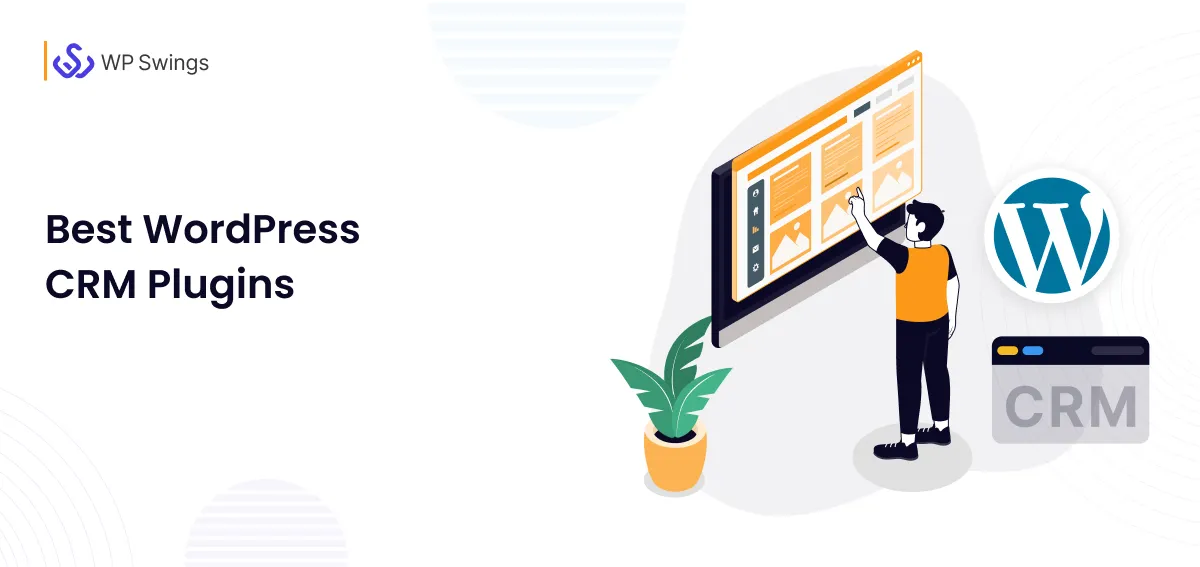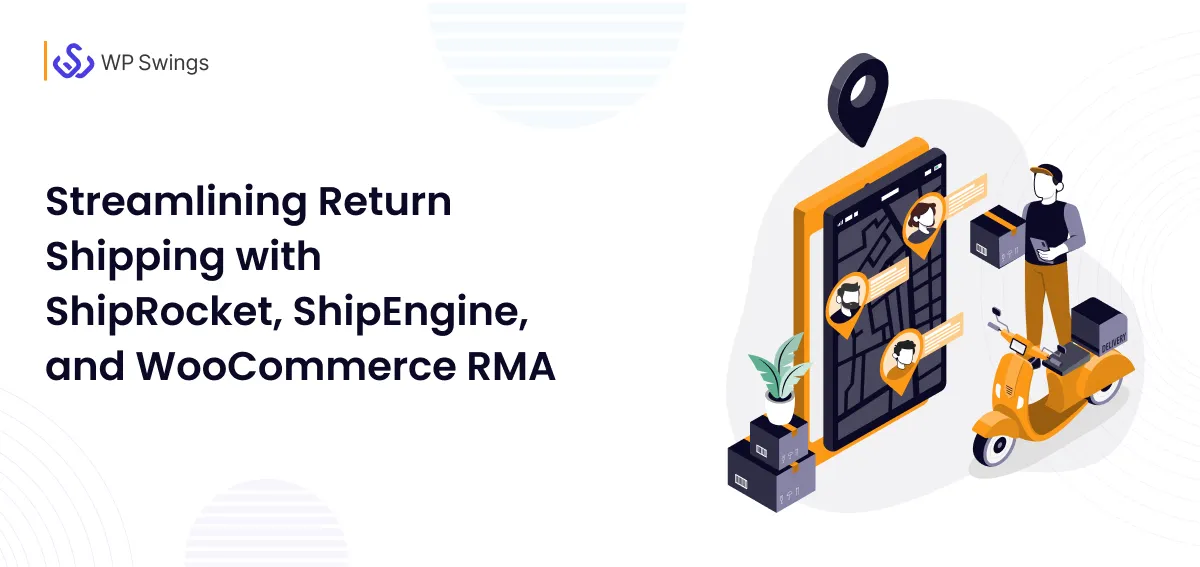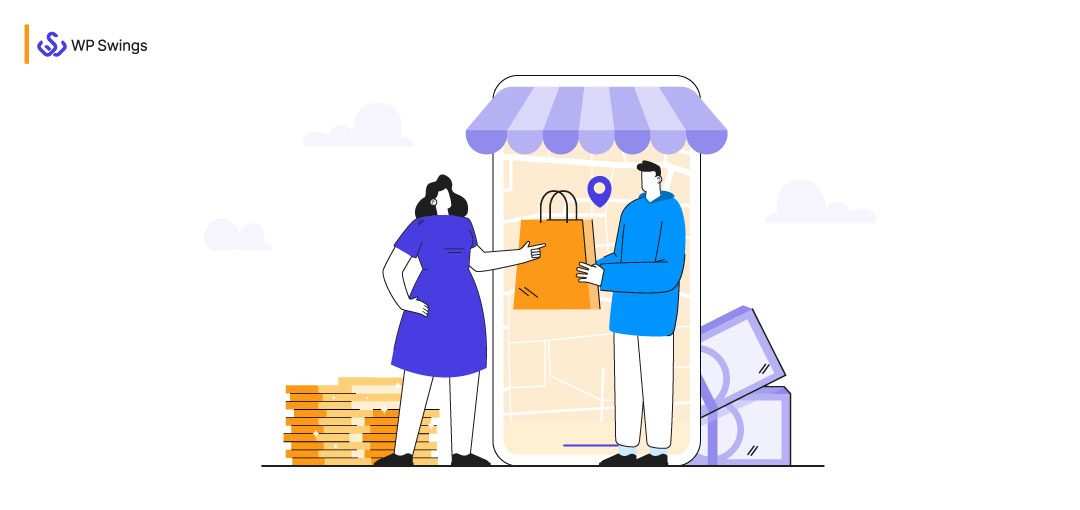
eCommerce RMA, or eCommerce Return Merchandise Authorization (RMA), is without a doubt one of the most prominent factors, and introducing this to your online store is a must.
WHY???
RMA functions as a control switch, closing the doors for product return requests when set to OFF and opening them when set to ON, following the return policy rules. The question arises: why authorize the negative flow of product returns? The answer lies in the pursuit of happy and satisfied customers. An unsatisfied customer not only impacts revenue but also diminishes future referral opportunities, affecting sales and traffic.
In this article, I will tell you about how RMA means Return Merchandise Authorization (RMA) in detail. I will cover what RMA is, how it works, what a perfect eCommerce RMA looks like, and how to implement a perfect RMA authorization to your WooCommerce store.
Learn More About…
-
- What is eCommerce Return Merchandise Authorization
- What Is A Return Merchandise Authorization Number?
- What Is A Return Merchandise Authorization Form?
- Why Does Your eCommerce Store Need RMA?
- Features Of A Perfect RMA Solution
- Technologies Upgrade In The RMA Process
- Best Practices To Follow While Integrating RMA with CRM, ERP & Other Solutions
- Your Take From Here…
(Jump to the section that interests you the most!)
Let’s get started.
What Is eCommerce Return Merchandise Authorization?
RMA, or Return Merchandise Authorization, is the initial step in returning an item for repair, replacement, or refund. It’s a formal documentation and tracking process commonly used by online businesses engaged in eCommerce.
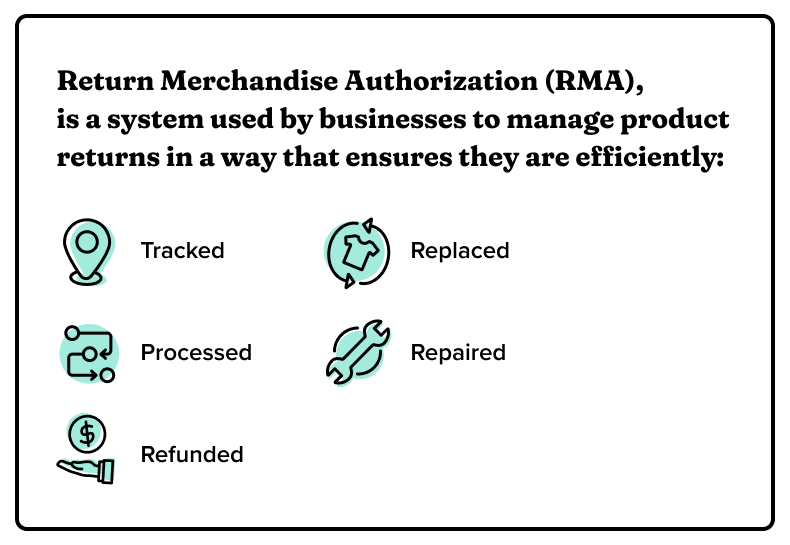
To initiate a return, customers usually contact the company for an RMA number, which helps track the return. These numbers are crucial for tracking the return process and referring to the authorization itself. RMAs can be issued for various reasons, such as receiving a damaged product or requesting a refund, and customers typically need to provide proof of purchase to obtain an RMA. The RMA process plays a key role in delivering excellent customer service and ensuring timely and efficient returns.
According to Statista research, nearly 26% of online-bought products are returned, compared to just 9% of items bought from a physical store that have been returned, this proves, RMA is a more renowned term in the eCommerce world.
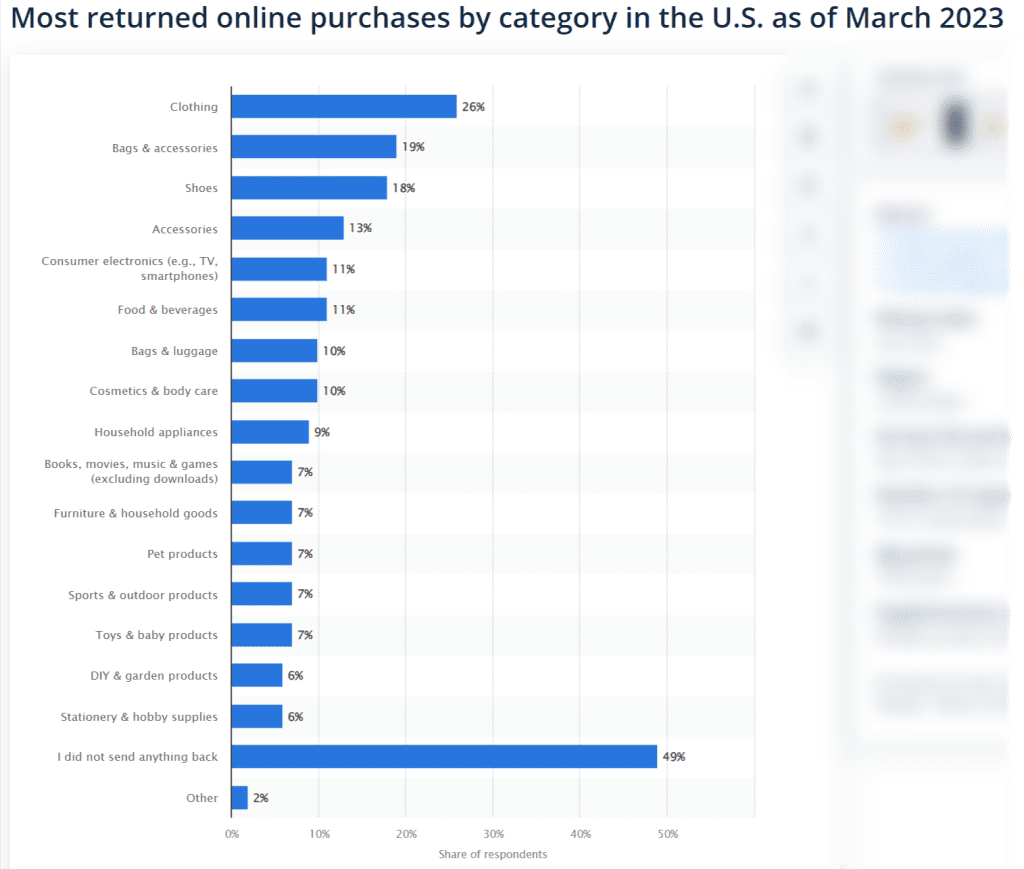
Source- Statista
The importance of RMA processing in eCommerce store management cannot be overstated. It is a crucial aspect that contributes to the seamless functioning of an online store. As a store owner, it is highly recommended to gain a thorough understanding of how RMA works and how to handle it effectively.
Taking the time to learn about this aspect will pay off in the long run and ensure smooth operations for your store.
So, why wait, let’s start with that now…
RMA which stands for Return Merchandise Authorization is a whole process that involves many micro-processes including—
- Return Process
- Refund Process
- Cancel Order Process
- Exchange Process
- Refund Payment System
- Wallet System
- Return Refund and Exchange Policy
- RMA Product Management, etc.
All these aspects together make a complete and convincing RMA system.
The moment a buyer feels the need for a refund, the RMA system comes into play and continues after the buyer has successfully returned the product.
Did You Know there is one Plugin With A Complete RMA Solution?
Get the one-stop complete solution for return, refund, cancel an order, exchange, wallet, and other related RMA management issues; all in this plugin…
What Is A Return Merchandise Authorization Number?
The RMA number means a tracking identifier for specific product returns within the company’s processing system. This unique number facilitates the updating of inventory management software or ERP systems in the warehouse upon the returned product’s arrival.
Here example of the RMA Number –
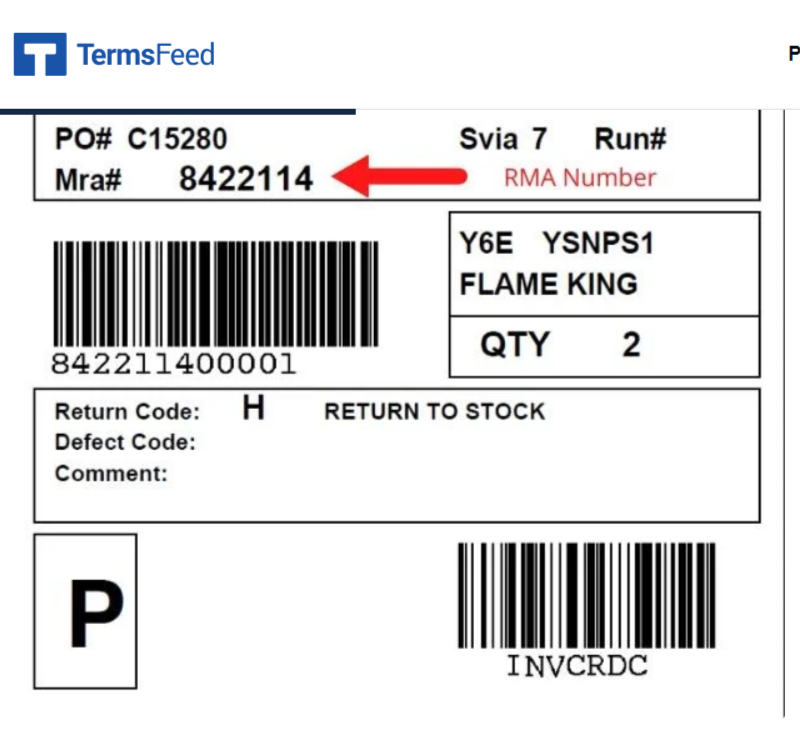
At times, the abbreviation may switch word order, appearing as “MRA,” as evidenced in the screenshot below, but it essentially refers to the same process. The utilization of the return merchandise authorization number system proves advantageous by offering an efficient means to monitor product returns and prevent potential processing delays. When an RMA number is employed, returned products can often be swiftly scanned and processed, minimizing inconvenience for the customer.
What Is A Return Merchandise Authorization Form?
A Return Merchandise Authorization (RMA) form is a document used for product returns, providing details on the reason for the return and outlining the subsequent steps. This form may be included in eCommerce packaging or sent to customers upon request. Customers complete the form and include it with the return.
Example for the RMA form:
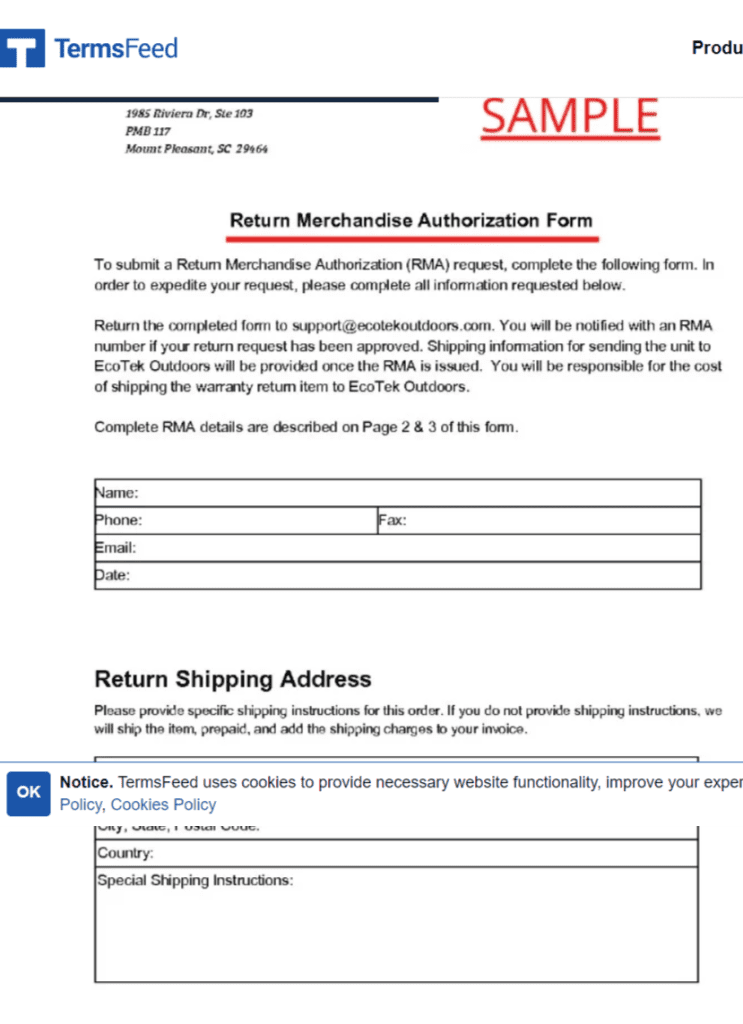
The company utilizes the RMA form to process returns and issue refunds or replacements as necessary. Key fields in the form include customer information (name, address, phone number, email), product details (name, model, serial number, purchase date), reason for return, and the customer’s preference for return or refund. Gathering comprehensive information upfront ensures a smoother return process for both the company and the customer.
Stages of eCommerce Return Merchandise
Return Merchandise Authorization, or RMA, is a crucial system in an eCommerce company because it gives the ability for customers to return, refund, and swap things they’ve bought if they don’t find them to be satisfactory. The ideal RMA prioritizes client acquisition over income in all situations. In eCommerce, the RMA process typically involves the following stages–
1. Request
A customer requests an RMA by contacting the eCommerce company through a customer service channel, such as email, phone, or online form. The customer provides information about the product they want to return, including the reason for the return.
2. Approval
The eCommerce company reviews the RMA request and decides whether to approve or reject it based on its return policy and the customer’s reason for the return. If the request is approved, the company issues an RMA number to the customer.

3. Shipping
The customer ships the product back to the eCommerce company, including the RMA number in the package.
4. Receipt
The eCommerce company receives the returned product and inspects it to ensure that it meets the conditions for a return, such as being in its original condition and packaging.
5. Processing
If the product is eligible for a return, the eCommerce company processes the return and issues a refund or exchange as appropriate. If the product is not eligible for a return, the company may reject the return or charge a restocking fee.
6. Communication
The eCommerce company communicates the outcome of the RMA process to the customer, either through email or a customer service channel.
By automating the RMA process and integrating it with other systems, such as a CRM or ERP, eCommerce companies can improve the speed and efficiency of the process and enhance customer satisfaction.
All these stages come under the eCommerce Return Merchandise Authorization system.
RMA decides the policy, regulations, action line of return, refund and exchange process, shipping label, etc., for everything that is needed in reverse logistics. RMA is a need of almost every online store. Underestimating it leads to continuous falling out of customers — new and loyal; both types of customers.
In the next section, we will discover why your store needs an effective RMA.
Why Does Your eCommerce Store Need RMA?
Almost every eCommerce store receives return or refund requests. These requests can climb up to 30% during the festive season.
And, it’s not just the new buyers, but your year-old customers might encounter some mishap that would compel them to look for a refund or exchange of their purchased product. Since the buyers cannot touch and experience the product physically during the time of purchase, hence, there is a higher chance that it does not suit them when received post-delivery.
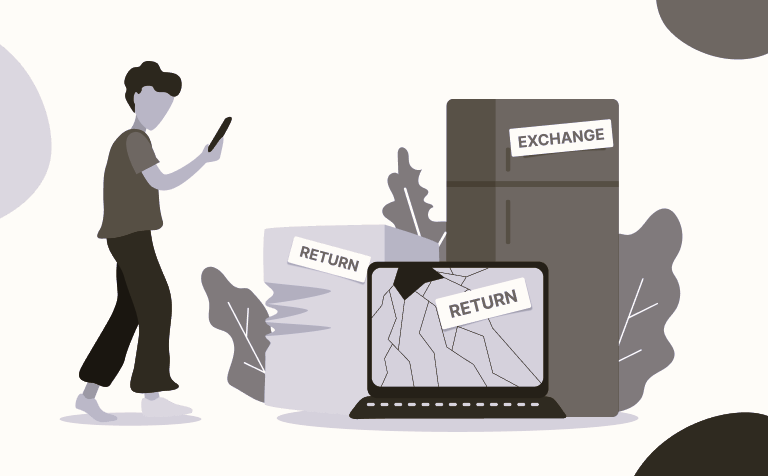
As a result, every eCommerce business in the game of selling online needs a good Return Merchandise Authorization (RMA) system or policy.
If you don’t build a perfect RMA system for your online store, your business will ultimately collapse. A convincing RMA strategy reduces the purchase risk of the buyers. It allows them to correct their wrong purchase decisions.
The customer is satisfied with the shopping experience you offer them and gives positive reviews for your store, which is a blessing to your business. Additionally, there is a high chance that his good shopping experience is a part of the discussion with their friends, which works as a referral.
Therefore, RMA is really important for winning your customers. It is a must for online stores. It is a must to stay strong in the high competition of eCommerce business.
WooCommerce RMA Solution By WP Swings
Return Refund and Exchange for WooCommerce is the best return plugin for WooCommerce that gives you complete control over your store’s RMA policy, especially during the festive season. Using the RMA plugin, you can easily set up your WooCommerce store in a variety of ways. Let’s talk about special Plugin features that will help you handle the festive madness-
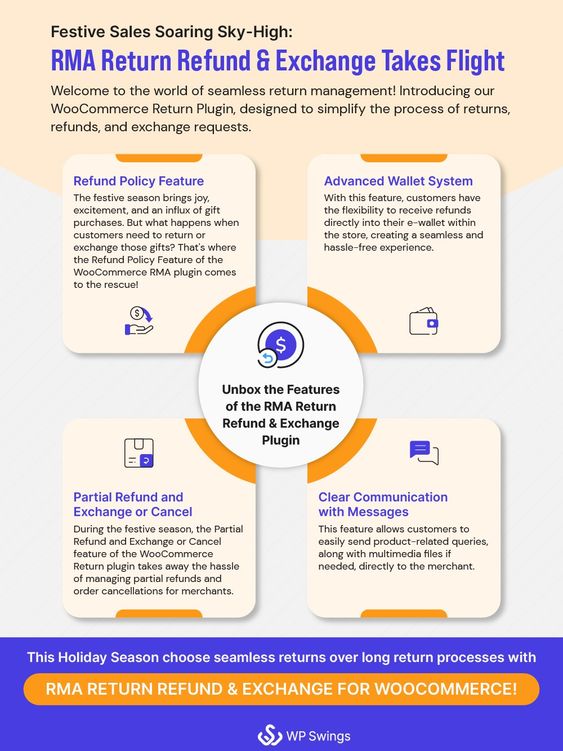
Importance Of RMA Process Automation
Automating the RMA process is important for several reasons. Firstly, it increases efficiency by eliminating manual tasks such as manual data entry, reducing the chances of errors and delays. This in turn leads to faster processing times and improved customer satisfaction.

Secondly, automation ensures that all RMA requests are processed consistently and following the company’s return policy. This reduces the risk of disputes and improves the accuracy of data related to RMA requests.
Additionally, automating the RMA process allows for real-time tracking of returns, so customers can stay informed about the status of their RMA. This enhances the transparency of the RMA process and improves the overall customer experience.
Finally, automating the RMA process allows companies to gather valuable data about returns, which can be used to identify trends, improve product quality, and inform future business decisions.
Overall, automating the RMA process brings numerous benefits and is an important aspect of a well-functioning eCommerce operation.
Do you want to set up the ideal RMA Return Refund & Exchange plugin for your eCommerce and WooCommerce Store? Check this video out,
Frequently Asked Questions About What Is RMA?
Q1. What is the Return Merchandise Authorization process?
RMA stands for Return Merchandise Authorization. It is the beginning of the process where you are returning the purchased product to get a refund, repair, and replacement. In this step, the business and customer discuss the problem and the business determines the validity of the issue.
Q2. What are the different types of RMA?
Seven main types of return merchandise authorizations:
- Refund
- Store Credit
- Exchange
- Warranty
- Third-party warranty
- No-shipping
- Reject
Q3. What are the benefits of the RMA process?
By implementing a dedicated RMA process in place, you get to streamline their return management process.
Doing this also gives them access to the return data, which enables them to analyze the patterns and trends to understand customer returns behavior, product performance, and user experience.
Q4. Who pays for RMA shipping?
It solely depends on the company’s return policy. But as per a recent study, revealed that 50% of customers usually expect the merchants to pay for the shipping.
Q5. How long does the RMA process take?
Usually, it takes 2-3 business days once the return has been received and it meets the following criteria: The RMA number is identified on the shipping label or package. All original equipment, components, manuals, cables, documents, and packaging included in the return package are in resalable condition.
Features Of A Perfect RMA Solution
Now, that we know about the importance of having a dedicated eCommerce Return Merchandise Authorization in place, it is also important to understand the features of an ideal RMA solution. It is the merchant’s responsibility to design a perfect Return Merchandise Authorization (RMA) process for their online store in such a way that does not make your buyers helpless.
At the same time, decision-makers must also ensure that the RMA does not give any space for WARDROBING.

Source: Google
Even though returning packets is more like a curse if those returning packets allow you to win a customer, it can be a blessing in disguise for your business.
In this section, I will list down some features that your RMA must have:
1. A Well-Written Refund Policy
For an eCommerce business that accepts returns of purchased products, it’s critical to control this negative flow through well-framed rules and regulations. This is termed a return or refund policy.
Most of the eCommerce stores have a return refund policy, which you can find, either in the footer or somewhere near the purchase button on the product page. It’s very important to have an easily discoverable refund policy because more than 50% of buyers read it before finalizing the purchase. A refund policy gives sellers a way to control returning customers, it restricts them from playing any tricks. So, every eCommerce seller must take it seriously.
2. Right Segmentation of Refundable & Non-Refundable Products
Not all products are refundable or returnable.
The buyers must be pre-informed about, whether the products are refundable or not. If possible, reasons must be mentioned why the category does not lie under refundable products.
A perfect RMA segments all the products of logical and rational thinking into categories that should be returnable refundable, or otherwise exchangeable.
Some of the standard non-refundable products include–
- Perfumes and self-care
- Makeup Products
- Personalized products
- Medical Products
- Intimate Jewelry products
- Food Items
These are some products that are hard to provide a refund because returning products are no longer feasible for resale.
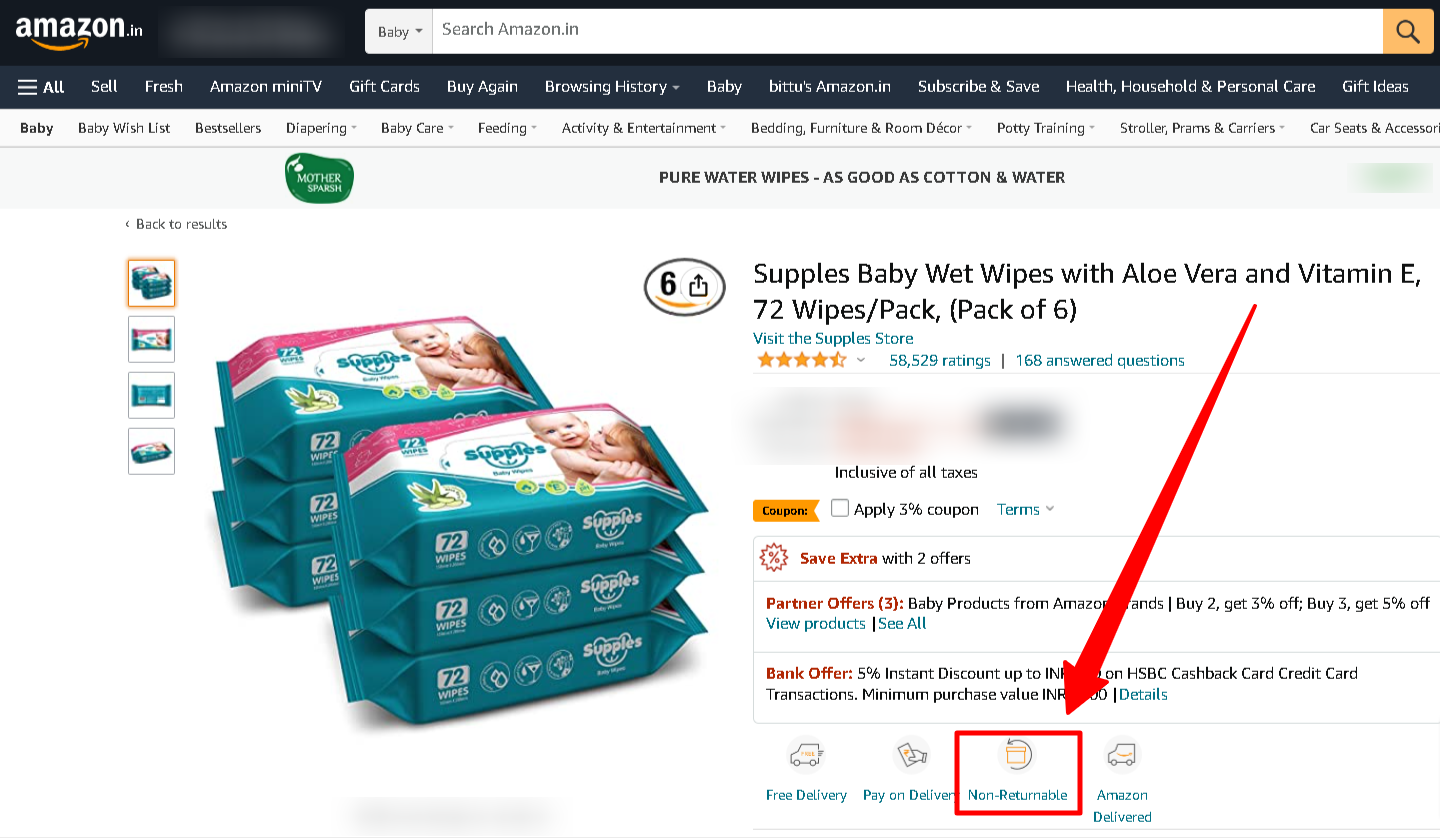
Source: Amazon
Genuine customers realize and appreciate it because they themselves will not like to receive any such personal care, or medical or food items that are returned by someone already.
However, in some cases, such as delivery damage, etc. merchants must listen to their customer’s queries, one-to-one, and resolve it.
3. Automation
Automation is a powerful tool in any business. It allows the merchant to manage a bulk of activities without much manpower. It sets the process on autopilot making it far more easier and quicker to complete the task.
A good RMA or an eCommerce Return Merchandise Authorization system is one where processes are automatically done in the backend with the least demand for manual involvement. As a result, the buyers don’t have to wait longer.
Any process that is repeated, and does not demand intelligent decision-making, can be automated. The plugin that I will discuss in the coming section can help you automate your WooCommerce RMA process.
4. Wallet Feature
Adding a wallet to your store has two major benefits.
- Paying the refund amount to the wallet is easier than to a customer’s bank or credit/debit card.
- Your revenue is not lost even if a refund is made.
A wallet is a store feature that adds a section to every individual logged-in user to hold equivalent cash value and use them to pay at the store for product purchases.
Need a Wallet Support System for Your eCommerce Business?
Several brands refer to it as a semi-closed prepaid system. That’s because; users can feed in amounts but can’t send the amount back to the bank.
They have no other option than to use that amount to buy anything at your store.

Source: Amazon
Hence, wallet features make it easier as well as a profitable eCommerce Return Merchandise Authorization system for your online store.
5. Returning Label
The returning product that is to be shipped back, requires a returning label. A returning label is a slip that contains all the necessary information such as package ID, product name, category, rates, dates, pricing, address, etc.
This slip gives identity to your package over the process and plays a vital role in tracking it.
To make it easy for the buyers, a good RMA system must provide a complete, downloadable returning label, that buyers can take a print of and stick to the package for shipping back to merchants.
6. Partial Cancel Feature
This feature provides immense help when the user does not want to cancel the entire order amount, instead, they want to cancel only a few items of the overall order.
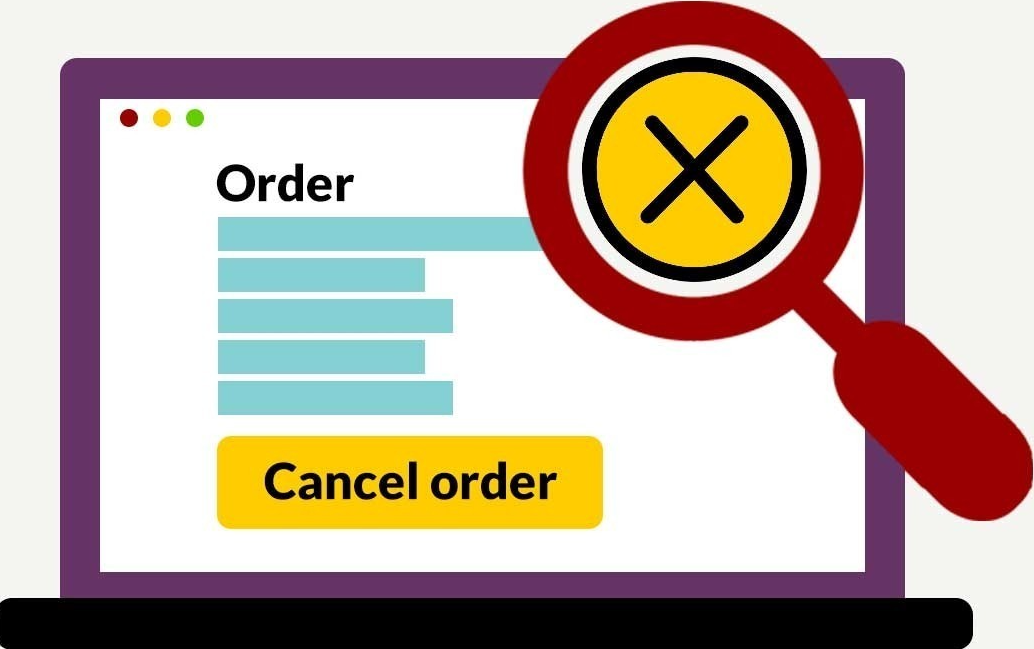
Thus, the buyers can select the product and cancel them individually instead of the whole order. The requested item will be canceled and the equivalent amount is refunded back, while the remaining order will still be shipped by the estimated time, as normal.
7. Trackable
Just as the shipping process is trackable, the return shipping process should be trackable as well.
The returning buyers should know what’s happening with their refund or return request.
8. Email & Other Refund Notes, Plus an Attachment
While requesting for refund or return, the buyers must have the option to put forward their reason for such a request. Additionally, they must also be given the “send attachment” option to verify their claim.
This not only helps buyers to put forward their queries but also helps merchants to discover the mishap so that they can improve or avoid it in the future.
9. Tax & Coupon Code Management
When purchasing online, offers and tax are added to the base cost of the product.
A perfect RMA should mention this in their policy, whether the coupon code and tax amount will be refunded along with the product cost or it will be deducted.
The software that will be used to implement eCommerce Return Merchandise Authorization should come up with such a feature, to automatically deduct the tax amount and coupon code amount from the refund amount.
10. Fast & Effective Process
Don’t make your returning buyers wait longer. The overall process of return, refund, and exchange must be processed in a fast and effective way.
If there is any step that’s taking longer than usual processing time; inform the customer about it and apologize for it.
All these little efforts you make for buyers are very well appreciated and increase the chances of turning them into loyal customers.
Want to Learn More About the Ideal Woocommerce Return Management System?
Technological Upgrades In The RMA Process
RMA (Reliability, Maintainability, and Availability) technologies refer to a set of tools, techniques, and processes aimed at improving the reliability and availability of systems and equipment.
Times are changing and it becomes important to change with these times. Keeping this trend in mind, we have listed some of the latest RMA technologies including—
1. Global Positioning System (GPS) Tracking
Delivery Monitoring and GPS tracking have made it easy for merchants to track the position of the return package at any given time. This technology has made the return and refund product process very seamless. The tracking enables the companies to keep an account of the return packages and to ensure that they are arriving at the right destination.
2. Predictive Maintenance
This technology uses data and machine learning algorithms to predict equipment failures, enabling maintenance to be performed before the failure occurs.
3. Augmented Reality
This technology is used to assist technicians in maintenance activities, providing real-time information and guidance on their work.
4. Internet of Things (IoT)
IoT devices can be used to monitor and collect data on the performance and condition of equipment, enabling predictive maintenance and real-time monitoring.
5. Condition-based Monitoring
This technology uses sensors and data analytics to monitor the performance and condition of equipment, providing early warning of potential failures.
6. Artificial Intelligence and Machine Learning
These technologies can be used to analyze large amounts of data from RMA or eCommerce Return Merchandize Authorization systems and equipment to identify patterns and make predictions about future failures.
Overall, the goal of these RMA technologies is to improve the reliability, maintainability, and availability of systems and equipment, reducing downtime and maintenance costs, and improving safety and efficiency.
Benefits Of Upgraded RMA Technologies
Upgraded RMA (eCommerce Return Merchandise Authorization) technologies can provide several benefits to eCommerce companies, including-
1. Improved Customer Experience
An efficient and streamlined RMA process can help to improve the customer experience by making it easier for customers to return products and receive refunds or replacements.
2. Reduced Processing Time
Upgraded RMA technologies can automate many of the manual tasks involved in processing returns, reducing the time required to handle each return.
3. Increased Accuracy
Automated RMA systems can help to reduce errors and ensure that the correct information is captured, leading to more accurate and consistent processing of returns.
4. Better Inventory Management
Improved RMA technologies can provide eCommerce companies with real-time visibility into their inventory levels, allowing them to manage their stock more effectively.
5. Increased Customer Satisfaction
By providing a more efficient and convenient RMA process, eCommerce companies can improve customer satisfaction and reduce the risk of negative reviews or lost customers.
Can Return Merchandise Help You Out With Customer Satisfaction???
Refer here to debunk the hidden secrets….
6. Improved Data Analytics
Upgraded RMA technologies can collect and analyze data on returns, allowing eCommerce companies to gain valuable insights into customer behavior and preferences, and make data-driven decisions about product offerings and marketing efforts.
Overall, integrating advanced RMA technologies can help eCommerce companies streamline their return processes, improve customer experience, and make more informed decisions about their operations.
Real-Life Scenario to Show the Impact of Integration

Here is a real-life scenario to illustrate the impact of RMA technology integration–
A large manufacturing company has been using traditional RMA practices for years. However, due to the increasing complexity of their production processes, they have been experiencing more frequent equipment failures and longer downtime.
The company decides to upgrade its RMA technology by incorporating predictive maintenance techniques, such as real-time monitoring and analysis of equipment performance data. This allows them to identify potential failures before they occur, and perform maintenance before they cause significant downtime.
As a result of the integration, the company experiences a significant decrease in equipment failures, reducing downtime by up to 50%. The improved reliability of their equipment also leads to increased production efficiency and better quality control, leading to an increase in customer satisfaction.
In addition, the data collected through the upgraded RMA technology provides valuable insights into the performance of the equipment. Enabling the company to make data-driven decisions about maintenance and improvement efforts. This results in cost savings, as the company can prioritize its maintenance efforts based on the data, rather than relying on guesswork or tradition.
Overall, the integration of advanced RMA technologies has a significant impact on the company’s operations. It helps in improving reliability, reducing downtime, and increasing profitability.
Best Practices To Follow While Integrating RMA With CRM, ERP & Other Solutions
When integrating RMA (eCommerce Return Merchandise Authorization) with CRM (Customer Relationship Management), ERP (Enterprise Resource Planning), and other solutions, it is important to follow the following best practices—
1. Define Clear Processes
Establish transparent processes and procedures for RMA requests, approvals, and returns. This will help streamline the process and ensure that all parties involved are on the same page.
2. Choose the Right Integration Method
There are different integration methods available, such as APIs, middleware, and direct database connections. Choose the method that best fits your needs and ensures that data is seamlessly transferred between systems.
3. Ensure Data Accuracy
Ensure that all data is accurate and up-to-date, especially customer information and order details. This will help to avoid errors and delays in the RMA process.
4. Use Unique Identification Numbers
Use unique identification numbers to track RMA requests and returns, and ensure that this information is shared between systems.
5. Automate Workflows
Automate as much of the RMA process as possible to reduce the chances of human error and speed up the process. This can include automated approvals, notifications, and status updates.
6. Monitor and Measure Performance
Monitor and measure the performance of the integrated RMA system, and regularly review and improve processes to ensure that they are efficient and effective.
7. Ensure Security and Privacy
Ensure that sensitive customer information is protected and that privacy regulations are adhered to. This includes using secure methods for transferring data between systems and storing data securely.
By following these best practices, you can ensure a smooth and efficient RMA process, improve customer satisfaction, and minimize the risks of errors and delays.
Your Take From Here…
RMA, which stands for Return Merchandise Authorization, is an essential system in an eCommerce business. That adds the possibility for return, refund, and exchange on purchased products that customers don’t find convincing.
A perfect RMA looks far beyond revenue and focuses more on winning customers.
Although returns and refunds lead to financial loss, implementing them is a MUST for eCommerce businesses. It keeps the door open for future sales, increases customer overall value, and increases referral possibilities.
Since, RMA is a vast concept, and involves several different processes in it such as canceling orders, refund and exchange request forms, wallet payment, returning labels, emails, and other things for smooth RMA processing. Hence, implementing it could be a challenge.
Thank you for reading. I hope this article helps you to gain knowledge about Return Merchandise Authorization from basics to fine detail.
If you think there is any need for discussion on any other related topic, mention it in the comments.



